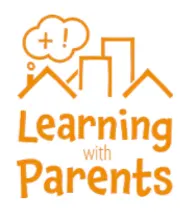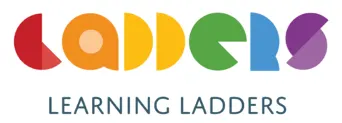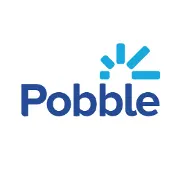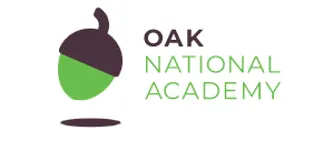Best Online Learning Resources UK (2025): A Complete Guide for Families and Schools

Choosing the right online tools can transform learning at home and in the classroom. This expertly curated guide highlights the best online learning resources in the UK, explaining what each platform does, who it’s for, how to get started, and typical costs. Everything is written in clear UK English, with practical tips for parents, carers and teachers.
Our selection prioritises platforms that are curriculum-aligned, easy to use, and designed to support progress, independence and engagement from Early Years to KS4. Explore the summaries, try the free tiers, and build a toolkit that suits your child or school.
Learning with Parents

At a glance
- Purpose: Strengthen home–school partnership through simple, practical activities families can do together.
- Stages: Early Years and Primary.
- Best for: Schools wanting high-quality parental engagement with low barriers to access.
Key features
- Teacher portal to assign topics and open-ended activities that work online or offline.
- Clear guidance for adults so support at home is doable and confidence-building.
- Focus on equity and inclusion, with activities that use everyday household items.
Quick start
- Create your school account and set up classes.
- Select a topic (e.g., number sense) and choose the suggested activities.
- Share links/instructions with parents and schedule a simple check-in point.
Pricing snapshot
Guide price: around £90 per class per year.
Website: learningwithparents.com
Learning Ladders

At a glance
- Purpose: A joined-up system for assessment, curriculum, homework and parental engagement.
- Stages: Primarily Primary (widely adaptable).
- Best for: Schools seeking coherent, data-informed planning with strong home links.
Standout strengths
- Identifies gaps in learning and maps next steps to curriculum objectives.
- Explains progress to parents and offers actionable suggestions for support at home.
- Centralises homework and reporting to reduce admin.
Implementation tip
Start with one subject (e.g., writing) to model best practice, then expand across the curriculum once staff are confident.
Pricing snapshot
Guide price: ~£1,000 per primary school (varies by context).
Website: learningladders.info
Pobble

At a glance
- Purpose: Make writing purposeful through drafting, feedback and publishing.
- Stages: KS1–KS2 (and flexible for older pupils).
- Best for: Boosting confidence, fluency and audience awareness.
Why it works
- Pupils build a portfolio and receive structured feedback from peers and teachers.
- Publishing motivates pupils by giving their work a real audience.
- Moderation tools simplify cross-school standardisation.
Try this
Run a fortnightly “publication day” where pupils showcase final drafts and reflect on edits using success criteria.
Pricing snapshot
Free for teachers (core tools); paid options available for classes/schools. See pricing.
Website: my.pobble.com
Carousel Learning

At a glance
- Purpose: Spaced retrieval practice via smart quizzing to secure knowledge in long-term memory.
- Stages: Upper Primary and Secondary.
- Best for: Daily recall, low-stakes testing and closing misconceptions.
Key features
- Teacher-built question banks; quizzes resurface over time to strengthen memory.
- Auto-marking and insightful analytics save time and guide reteaching.
Classroom idea
Use short retrieval quizzes at the start of lessons (3–5 mins), mixing today’s topic with questions from last week and last term.
Pricing snapshot
Free for individual teachers; paid tiers for departments and schools.
Website: carousel-learning.com
DoodleMaths

At a glance
- Purpose: Adaptive Maths practice for ages 4–14, aligned to the National Curriculum.
- Best for: Daily personalised practice, confidence-building and times-tables fluency.
What we like
- Individualised programmes adjust to strengths and gaps.
- Teacher and parent dashboards provide clear progress insight.
- Game-style challenges keep motivation high.
Pricing snapshot
Indicative licence: around £6 per user per year (often includes DoodleTables and dashboards).
Website: doodlemaths.com
Oak National Academy

At a glance
- Purpose: Free, teacher-designed online lessons with videos, quizzes and resources from Early Years to KS4.
- Best for: Independent study, revision and cover lessons with clear sequencing.
Why it helps
- Structured lessons are easy to follow and match curriculum aims.
- Accessible features (e.g., captions) support diverse learners.
Pricing snapshot
Free for teachers and pupils.
Website: thenational.academy
Twinkl

At a glance
- Purpose: A vast library of teacher-made resources from EYFS to KS4—plans, assessments, activities and more.
- Best for: Quick planning, differentiated resources and ready-to-teach materials.
Highlights
- Targeted materials make personalised learning straightforward.
- Extensive bank of CPD and practical classroom ideas.
Pricing snapshot
Free account (tens of thousands of resources); paid memberships unlock the full catalogue.
Website: twinkl.co.uk
ScratchJr

At a glance
- Purpose: Introduce coding through creative stories and games (approx. age 5+).
- Best for: Building computational thinking, sequencing and problem-solving in Early Years/KS1.
What makes it engaging
- Drag-and-drop blocks keep coding intuitive and visual.
- Children can record voices, add photos and animate characters.
Pricing snapshot
Free app.
Website: scratchjr.org
Avaz Lite

At a glance
- Purpose: AAC (augmentative and alternative communication) to support children who experience speech and language challenges.
- Best for: Pupils who need visual vocabulary, structured routines and progress tracking.
Key features
- Customisable boards with clear symbols and categories.
- Tools that support evidence-based approaches (e.g., creating picture-based communication systems).
- Family-friendly design so communication can continue at home.
Pricing snapshot
Core app free; optional paid upgrades and multi-licence discounts are usually available.
Website: avazapp.com
BBC Bitesize

At a glance
- Purpose: The UK’s study hub from Early Years to post-16, with explanations, videos and quizzes.
- Best for: Everyday homework support, revision and exam preparation.
Why it’s a staple
- Clear, curriculum-matched explanations across subjects.
- Useful career guidance and next-steps information for older learners.
Pricing snapshot
Free to access.
Website: bbc.co.uk/bitesize
Comparison at a glance
| Resource | Core purpose | Best for stages | Parent engagement | Free tier | Guide price |
|---|---|---|---|---|---|
| Learning with Parents | Home–school activities | EYFS, Primary | Excellent | — | ~£90/class/yr |
| Learning Ladders | Assessment & curriculum | Primary | Strong | — | ~£1,000/school/yr |
| Pobble | Writing & publishing | KS1–KS2 | Good | Yes | Paid upgrades |
| Carousel Learning | Spaced retrieval | Upper Primary, Secondary | Moderate | Yes | Dept/school tiers |
| DoodleMaths | Adaptive maths practice | Ages 4–14 | Good | Trials available | ~£6/user/yr |
| Oak National Academy | Structured lessons | EYFS–KS4 | Moderate | Yes | Free |
| Twinkl | Teacher-made resources | EYFS–KS4 | Good | Yes | Paid tiers |
| ScratchJr | Intro to coding | EYFS–KS1 | High (shared play) | Yes | Free |
| Avaz Lite | AAC communication | Varied (SEN focus) | Excellent | Yes | Paid upgrades |
| BBC Bitesize | Study & revision | EYFS–Post-16 | Moderate | Yes | Free |
How to choose the right mix
- Start with your goal: Do you need retrieval practice, writing stamina or communication support?
- Balance online and offline: Pick tools with hands-on activities so learning isn’t all screen-based.
- Pilot first: Trial one class or year group, gather feedback, then scale.
- Keep logins simple: Fewer accounts = more learning time.
Safeguarding & privacy checklist
- Use child-friendly display names and restricted sharing by default.
- Check each platform’s data policy and UK data protection commitments.
- Agree simple online behaviour rules with pupils and parents.
Recommendations and Tips
Use this practical checklist to choose, launch and sustain the best online learning resources in the UK at home and in school. Everything here is written in clear UK English and designed to save time while protecting pupil wellbeing and privacy.
Quick-start checklist
- Define the goal: retrieval fluency, writing stamina, maths confidence, or communication support.
- Pick 2–3 core tools: one for practice (e.g., quizzing), one for content (explanations/lessons), and one for creation (writing/coding).
- Pilot for two weeks: small group, clear targets, simple routine.
- Review impact: keep what improves outcomes; remove anything that adds workload without benefit.
Blended learning flow (20–30 mins)
- Warm-up retrieval (5 mins): 5–8 short questions from today, last week and last term.
- Model or explore (10 mins): brief video/text or teacher demo.
- Independent practise (10 mins): adaptive task or hands-on activity with household materials.
- Reflect (2–3 mins): “What went well? What will I try next?”
For families
- Keep it short and regular: 10–20 minute blocks beat long sessions.
- Talk about learning: ask children to explain an idea; teaching others strengthens memory.
- Mix on- and offline: pair a quick quiz with an everyday task (measuring, sketching, reading aloud).
- Celebrate effort: use evidence of progress (before/after work, quiz graphs), not just badges.
For teachers and schools
- Standardise routines: same retrieval opener each lesson; fewer platforms, deeper use.
- Use analytics smartly: reteach the most-missed items only; re-quiz within a week.
- Publish for purpose: fortnightly writing showcases increase motivation and quality.
- Plan for equity: prioritise resources with printables/offline options and low bandwidth.
Accessibility and SEND
- Enable accessibility: captions, read-aloud, larger fonts, high contrast, dyslexia-friendly options.
- Chunk tasks: small steps with frequent feedback and visual scaffolds.
- Offer alternatives: allow responses by multiple choice, oral explanation or images where appropriate.
Safeguarding and privacy
- Use institutional logins and restrict sharing to class/school groups.
- Protect identities: pseudonyms for public galleries; never include personal details in work samples.
- Data rights: check UK data handling, export and deletion options before adoption.
Device and setup tips
- Browser first: keep a modern, updated browser and stable Wi-Fi; headphones help concentration.
- Prepare a pack: paper, pencils, ruler, simple counters (coins/buttons) for offline practice.
- Minimal clicks: share direct task links and keep all links in one pinned page/post.
Weekly home–school message (template)
Focus: Fractions—halves and quarters
Why it matters: builds part–whole understanding for later ratio work
Two 5-minute tasks: (1) Find 4 items you can split into halves; (2) Sort pictures into halves/quarters
How to get help: reply to this message or see our guidance page
Measuring impact (keep it simple)
- Retrieval accuracy +20% in 4 weeks on target topics.
- Two drafts produced for each writing task with specific edits.
- Adaptive practice streaks (10–15 mins, 4× weekly) sustained for a half-term.
Budget and procurement
- Pilot first: one year group, half a term; evaluate learning gains and workload.
- Bundle smartly: negotiate per-pupil/class pricing; keep a strong free core for reference/revision.
- Plan exit routes: ensure you can export pupil data and work before contracts renew.
Staff training that sticks
- One use-case at a time: e.g., “5-minute retrieval at the start of every lesson”.
- Hands-on demos plus a one-page quick-start guide.
- Peer check-ins: fortnightly, share a quick win and one hurdle.
Troubleshooting quick wins
- Low engagement? Shorten tasks, add a visible goal, and publish outcomes to a class gallery.
- Data overwhelm? Track only three metrics: participation, accuracy trend, next steps.
- Tech hiccups? Keep an offline backup task aligned to the same objective.
Frequently Asked Questions: Best Online Learning Resources UK
How do I choose the right mix of online resources for my child or class?
Start with your learning goal (e.g., phonics, recall, writing, maths fluency, communication). Shortlist two or three platforms that directly support that goal, then trial them with a small group for two weeks. Keep what demonstrably improves engagement and progress, and drop anything that adds admin without impact.
- For recall: retrieval-practice tools (e.g., Carousel-style quizzing).
- For writing: drafting, feedback and publishing (e.g., a Pobble-style workflow).
- For maths fluency: adaptive daily practice (e.g., a DoodleMaths-style app).
- For home–school partnership: structured, parent-friendly tasks (e.g., Learning with Parents-type activities).
Are these resources aligned to the National Curriculum in England?
Many leading UK platforms map content to EYFS, KS1, KS2 and KS3/4 objectives. When reviewing, check for a public curriculum map, topic sequencing, and assessment descriptors that match your school’s scheme. Alignment makes planning easier and ensures coverage and progression across the year.
What’s the best way to blend online and offline learning?
Use digital tools for what they do best—personalisation, feedback and retrieval—and pair them with hands-on tasks using everyday materials. For example, set a 10-minute online quiz, then a practical task (measuring, reading, sketching) that consolidates the same objective.
- Keep activities short and purposeful (10–20 minutes).
- Finish with a quick reflection (“What did I learn? What’s still tricky?”).
How can I support learners with SEND using mainstream platforms?
Look for platforms with accessibility features (captions, dyslexia-friendly fonts, adjustable difficulty, read-aloud, symbol support). Build a routine of small steps, frequent feedback and visual scaffolds. AAC-focused tools (like an Avaz-type app) can complement mainstream lessons by giving pupils clear ways to communicate and participate.
How do I keep children motivated over time?
Motivation grows when tasks feel achievable, meaningful and social. Mix “quick wins” (e.g., timed recall quizzes) with authentic audience moments (publishing writing to a class gallery). Use streaks or badges sparingly; emphasise progress evidence (before/after samples, quiz graphs) and celebrate effort.
What does good retrieval practice look like in primary and secondary?
Effective retrieval is little and often. Ask 5–8 short questions at the start of lessons, drawing from today, last week and last term. Use a Carousel-style scheduler so questions resurface automatically. Keep it low-stakes, mark rapidly (ideally auto-marked), and reteach only the gaps you find.
How can online tools improve writing outcomes?
Follow a cycle: model → draft → feedback → redraft → publish. Platforms that enable peer and teacher comments help pupils write for a purpose and iterate with clear success criteria. Schedule a “publication day” each fortnight so every pupil experiences audience and pride in their work.
What’s the smartest way to use adaptive maths apps?
Assign daily 10–15 minute sessions. Check the teacher dashboard weekly to spot persistent misconceptions and set a short, offline intervention task to tackle them. Pair app practice with concrete resources (counters, number lines) so pupils build conceptual understanding, not just speed.
How do we involve parents and carers without overwhelming them?
Choose tools that provide plain-English instructions, quick activities and household-materials options. Send one weekly message with: the focus (fractions), the why (what it helps with), and two 5-minute activities. Keep logins simple; where possible, share direct task links rather than multiple portals.
What if our internet access is limited?
Prioritise platforms that offer printable tasks, low-bandwidth modes or offline-friendly activities. Batch-download materials over school Wi-Fi, then complete tasks offline at home. Blend with hands-on work (reading, note-making, kitchen-table maths) to reduce reliance on streaming.
How should we manage screen time?
Think in terms of purpose, not minutes. Keep individual online tasks short (10–20 minutes), chunked by subject, and follow with offline practice. Build natural breaks (movement, handwriting, reading on paper). For younger pupils, co-view where possible and encourage talk about learning.
How can we evidence learning for inspections or internal reviews?
Export or screenshot dashboard reports, keep a simple log of retrieval scores, and store before/after samples (first draft vs final). Tie evidence to your curriculum map (“Term 2: fractions—fluency & reasoning”). Moderation tools in writing platforms can support standardisation across classes.
Does publishing pupil work online raise safeguarding risks?
Use pseudonyms, disable public comments if not needed, and restrict galleries to your class or school community. Never share personal information in work samples. Ensure the platform offers privacy controls and that you’ve obtained the appropriate parental consent via your school’s usual process.
How do we support pupils with English as an Additional Language (EAL)?
Choose resources with visual scaffolds, vocabulary banks and audio support. Pre-teach key words before lessons, and revisit them through retrieval quizzes. Encourage dual-language note-making where appropriate and use tasks that allow speaking, pointing and demonstrating, not just writing.
What’s a simple weekly structure that works at home?
- Mon–Thu: 10 mins retrieval; 15 mins adaptive maths; 20 mins reading/writing task; short offline practice.
- Fri: Showcase day—publish a piece (writing, photo of practical work) and review the week’s “one big win”.
Keep it predictable and brief; consistency beats marathon sessions.
How do big free libraries (like a Bitesize-style hub) fit with paid tools?
Use the free library for explanations, revision and homework help. Deploy paid tools where you need adaptive practice, analytics, or structured courses. The combination covers both breadth (reference) and depth (targeted practice and feedback).
How can we introduce coding in EYFS/KS1?
Start with unplugged computing (sequencing, directions, patterns) and progress to a block-based app (a ScratchJr-style tool). Keep projects short and creative—tell a story, animate a character, add voice recordings—so pupils experience coding as playful problem-solving.
What should we look for in data and analytics?
Dashboards should show accuracy over time, question-level analysis, suggested next steps, and easy export. Avoid systems that bury insights in multiple clicks. You want to answer quickly: Who needs help? With what? What’s the smallest next step?
How do we budget sensibly for a whole-school rollout?
Pilot with one year group for half a term. If impact is clear, negotiate per-pupil or per-class pricing and seek bundled access across subjects where possible. Retain a free core (e.g., reference library) and add paid tools only where they deliver time savings or measurable progress.
What’s the best way to train staff and sustain good practice?
Run a 45-minute hands-on session focused on one use case (e.g., “retrieval at the start of every lesson”). Provide a one-page quick-start guide, pair staff for peer check-ins, and review data after two weeks. Share real pupil work and short wins at staff meetings to build momentum.
How can we make home–school communication smoother?
Choose platforms that let teachers send concise assignment links and automated reminders. Standardise a weekly message format (Focus → Why it matters → Two 5-minute tasks → How to get help). Keep all links in one pinned post or school page to reduce confusion.
How do I know if a platform is genuinely helping?
Define a simple success metric up front (e.g., “+20% correct on retrieval quizzes in 4 weeks” or “two drafts produced for each writing task”). Review every fortnight. If the tool doesn’t move the needle on your metric—or creates too much admin—drop it and try something else.
What device setup is recommended?
Any modern laptop, tablet or Chromebook typically suffices. Prioritise a stable browser, updated OS, and a quiet space with headphones. For printing or offline tasks, prepare a home learning pack (paper, pencils, ruler, counters made from coins/buttons).
How can we reduce teacher workload while using multiple tools?
Limit the stack to 2–3 core platforms. Use auto-marked quizzes for daily checks, templates for feedback comments, and schedule recurring assignments. Integrate with your MIS/VLE if available so classes and logins are provisioned automatically.
How do we protect pupil privacy and comply with UK data protection law?
Use institutional accounts, restrict sharing to class/school groups, and avoid posting personal details. Ensure the provider publishes clear data processing terms, UK/EU data handling commitments, and tools for data export and deletion. Train staff on safe usage and consent.
What’s a good approach to feedback online?
Use a simple code (e.g., T = target, G = great example) plus one actionable next step. For writing, ask pupils to respond with a specific edit (add an example, improve a sentence). For quizzes, reteach only the most-missed items and re-quiz within a week.
How can we ensure accessibility for pupils who struggle with reading?
Provide audio support, reduce reading load with icons/diagrams, and allow answers by voice or multiple choice where appropriate. Offer larger fonts, high contrast, and short segments. Pair digital tasks with concrete objects and oral rehearsal.
Do we need a home learning policy for technology use?
It helps. Include: platform list (and why each is used), expected weekly time, how to get help, privacy rules, and guidance on screen breaks. Share a one-page version with parents to keep expectations clear and consistent.
How do we scaffold independent study for older pupils?
Provide a weekly planner (topics, targets, checkpoints) and model spaced revision with retrieval tools. Encourage pupils to keep a learning journal (mistakes, fixes, next steps) and to schedule short, frequent sessions rather than cramming.
What quick wins should we try this term?
- Daily 5-minute retrieval at lesson starts (auto-marked).
- Fortnightly writing publication with peer feedback.
- 10-minute adaptive maths homework, four times a week.
- One weekly message to families with two simple tasks and why they matter.
Prepared by School Search — independent guidance to help UK families and schools make confident choices about online learning.




